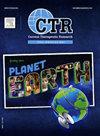A Randomized, Prospective and Crossover Study, Comparing the Eradication Rate After 10 Days of Concomitant Therapy to Bismuth Quadruple Therapy Among a Sample of the Lebanese Population
IF 1.5
Q3 MEDICINE, RESEARCH & EXPERIMENTAL
Current Therapeutic Research-clinical and Experimental
Pub Date : 2025-01-01
DOI:10.1016/j.curtheres.2025.100791
引用次数: 0
Abstract
Background
Concomitant therapy and bismuth quadruple therapy are both recommended as first-line treatment regimens for the empiric treatment of Helicobacter pylori infection, especially after the increased resistance to clarithromycin.
Objective
Our goal was to compare both treatment regimens among a sample of the Lebanese population to eventually conclude whether one of these therapies has a higher efficacy than the other one as a first- and second-line treatment regimens.
Methods
It is a randomized, prospective, and crossover study, started from March 2016 to December 2018. Participants were randomly chosen patients diagnosed with active H pylori through histology. Two groups were then formed randomly and equally: patients in the first group received 10 days of concomitant therapy, whereas patients in the second group received 10 days of bismuth quadruple therapy. Eradication was evaluated by the 14C urea breath test done 6 weeks after the end of antibiotic use. A negative breath test indicated a successful eradication. All patients with a positive breath test were then given the other treatment regimen for another 10 days and then re-evaluated for eradication in the same manner.
Results
Both regimens demonstrated similar efficacy as first-line therapies for H pylori eradication. Among 175 patients receiving concomitant therapy, 160 (91.4%) achieved eradication, whereas in the 174 patients treated with bismuth quadruple therapy, 164 (94.2%) were successfully eradicated (P = 0.306). Among patients requiring second-line treatment, 14 of 15 (93.3%) who failed concomitant therapy were successfully treated with bismuth quadruple therapy, whereas all 10 patients (100%) who failed bismuth therapy achieved eradication with concomitant therapy (P < 0.001).
Conclusions
Bismuth quadruple therapy and concomitant therapy are both equally effective first-line treatment regimens for the eradication of H pylori. They are also effective if used as second-line treatment regimens for this purpose. Lebanese Clinical Trials Registry identifier: LBCTR2024095653.
一项随机、前瞻性和交叉研究,比较黎巴嫩人群样本中伴随治疗和铋四联治疗10天后的根除率
背景:联合治疗和铋四联治疗均被推荐为经验治疗幽门螺杆菌感染的一线治疗方案,特别是在对克拉霉素的耐药性增加之后。我们的目的是在黎巴嫩人群样本中比较两种治疗方案,最终得出结论,作为一线和二线治疗方案,其中一种治疗方案是否比另一种治疗方案具有更高的疗效。该研究是一项随机、前瞻性、交叉研究,于2016年3月至2018年12月开始。参与者随机选择通过组织学诊断为活动性幽门螺杆菌的患者。然后随机等分两组:第一组患者接受10天的联合治疗,第二组患者接受10天的铋四联治疗。在停用抗生素6周后通过14C尿素呼气试验评估根除情况。呼气测试呈阴性表明根除成功。所有呼吸测试呈阳性的患者再给予另一种治疗方案10天,然后以同样的方式重新评估根除情况。结果两种方案在根除幽门螺杆菌方面表现出相似的一线治疗效果。175例合并治疗的患者中,160例(91.4%)获得根除,而174例采用铋四联治疗的患者中,164例(94.2%)获得根除(P = 0.306)。在需要二线治疗的患者中,15例合并治疗失败的患者中有14例(93.3%)成功地接受了铋四联治疗,而所有10例合并治疗失败的患者(100%)都实现了根除(P <;0.001)。结论铋四联疗法与联合治疗是根除幽门螺杆菌的有效一线治疗方案。如果用作二线治疗方案,它们也是有效的。黎巴嫩临床试验注册中心标识:LBCTR2024095653。
本文章由计算机程序翻译,如有差异,请以英文原文为准。
求助全文
约1分钟内获得全文
求助全文
来源期刊
CiteScore
3.50
自引率
0.00%
发文量
31
审稿时长
3 months
期刊介绍:
We also encourage the submission of manuscripts presenting preclinical and very preliminary research that may stimulate further investigation of potentially relevant findings, as well as in-depth review articles on specific therapies or disease states, and applied health delivery or pharmacoeconomics.
CTR encourages and supports the submission of manuscripts describing:
• Interventions designed to understand or improve human health, disease treatment or disease prevention;
• Studies that focus on problems that are uncommon in resource-rich countries;
• Research that is "under-published" because of limited access to monetary resources such as English language support and Open Access fees (CTR offers deeply discounted English language editing);
• Republication of articles previously published in non-English journals (eg, evidence-based guidelines) which could be useful if translated into English;
• Preclinical and clinical product development studies that are not pursued for further investigation based upon early phase results.

 求助内容:
求助内容: 应助结果提醒方式:
应助结果提醒方式:


